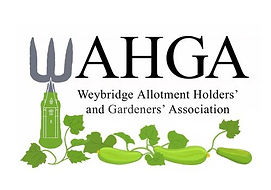By WAHGA plot-holder, Diane Ewart

Mulch is simply a protective layer on the soil and can be organic or inorganic.
Organic
Anything that used to be alive. It will breakdown into the soil, and includes leaves, bark, homemade gar- den/allotment compost, card- board, manure
Inorganic
A more permanent covering, generally for decorative purposes such as gravel, pea shingle. It also includes non-decorative mulches such as weed sup- pressing membrane.
A mulch seals rainwater and moisture (e.g.dew, manual watering) into the soil and slows down evaporation. It keeps in the warmth of the soil, so improving the grow- ing conditions for the plants in the spring. The soil is protected from erosion, such as from being blown away by the wind or washed downhill by rain. Another benefit from mulching is that it reduces the growth of weed seeds by cutting out the light needed for germination.
Mulching specifically with organic matter has significant additional benefits and can be one of the greenest recycling methods possible. It is also one of the best things you can do for the growing conditions of the soil as it not only adds nutri- ents, it also improves soil structure . That means your soil will simultaneously drain and hold moisture better, your plants will be healthier and grow and per- form better. Our allotments have a sandy loam soil and anything that helps retain moisture is a bonus! Even if you do have a clay patch, adding organic matter over many years develops a more open structure to the soil.
Leaf mulch is something I have experimented with. In the autumn just collect the leaves, place them under cardboard and the worms will very quickly work them into the soil. You end up with some amazing worm cast material as well. Alternatively a pile of leafs covered with cardboard will, over a year, rot down to a rich leaf mould ideal for mulching.
Another free mulch resource is cardboard. I apply a layer of allotment made compost or composted manure on the soil in late autumn and cover this with cardboard. This protects the soil, adds nutrients, and the cardboard breaks down over the winter and can be dug into the soil in the spring.
A living mulch - green manure - is another option ideally suited to the allotment. Green manure protects the soil, reduces weeds, adds organic matter and provides nutrients. It’s also cheap! Green manure seeds are sold in the allotment shop and there’s a wide variety of seeds split into summer and autumn manures.
Summer manure is sown in the spring and summer and dug into the soil 3 - 9 weeks later. Autumn manure is sown in vacant ground after the harvest. The green mate- rial is cut back and dug into the ground in the early spring.
One further handy tip: any paths that you create on your allotment don’t need a layer of weed suppressing membrane covered with bark and wood chip. The bark will break down and create an ideal environment for weeds to grow, the roots will grow through the membrane and be practically impossible to remove. Rather, simply lay the bark on bare soil and just keep adding to it regular- ly. In the spring your now well-rotted bark can be used as a mulch on your raspberries or around any fruit trees and you just replenish the path with new bark.
The soil on the allotment is a vital resource. We are just the custodians for the next generation. We need to en- sure that we leave our soil in a better state than we took it on. Mulching with organic matter is key to doing just that.
Next month, look out for an article on tips for making your own compost. Just think, by composting your green waste on the allotment, and then returning it to the soil, there are no transport miles involved and it’s free. What’s not to like?


